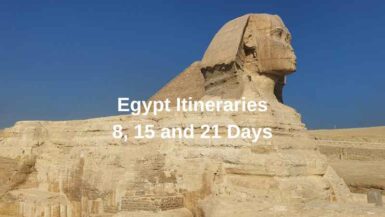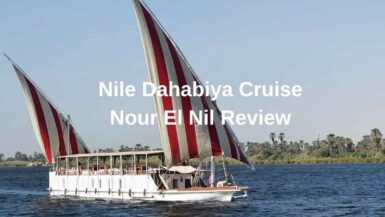Home to some of the most beautiful national parks in Africa, Kenya is a popular destination for first-time safari-goers.
With most of Kenya’s safari destinations only a couple of hours away from Nairobi, and with Nairobi housing one of the largest airports on the continent, organising a safari in Kenya is fairly straightforward in comparison to other destinations across Africa.
However, organising a safari can still be a daunting task! In this article, I’m going to tell you everything you need to know about planning a Kenya safari, to ensure that your trip runs as smoothly as possible.
This post may contain affiliate links. Please see our disclosure for more information. As an Amazon Associate, we earn from qualifying purchases (if applicable).

How to Go on Safari in Kenya
When it comes to booking your Kenya safari, there are a number of options at your fingertips.
The first option is a self-driving safari, where you rent a car and drive through the country on your own terms. However, some parks including the Masai Mara are very challenging to drive through, consisting of various terrains and a difficult road network. Self-drive safaris are obviously less costly, but not necessarily the best option.
Booking a guided group drive is definitely the most preferable and practical way, as it offers the best opportunity to not only see the wildlife, but also to learn about the behaviour of the different animals and the ecology around them. Guides are not there to just point to animals, but are extremely knowledgeable and will know the best places to take you, to help you get the most enjoyment from your safari. They can also tell you fascinating stories about their own experiences that you take back with you and keep forever.
There are two options when it comes to guided safaris: shared safaris and private safaris. If budget allows, booking a private guided tour is far better and more intimate but understandingly, it does come at a price.
Distances between parks are usually a few hours in Kenya, which means you may spend a fair amount of time travelling to and from game parks. If time is limited and you can afford fly-in safaris, these are a great option.
What’s the Cost of a Safari in Kenya?
Costs of a safari in Kenya are very similar to those in neighbouring Tanzania and depend mostly on the time of year and level of comfort and luxuries you choose. Generally, you can expect to pay upwards of about $260 per person per day for a budget safari in low season, rising to about $300 per person per day during high season.
A mid-range safari can cost around $350-$450 per person per day, while high-end safaris can reach into tens of thousands of dollars per day. It’s a case of finding the one that suits you.

When is the Best Time to go on Safari in Kenya?
Although Kenya is generally a year-round destination, the best time to visit is during the long dry season around June to mid-October. The weather is not too hot then, rain is scarce, the vegetation is sparse and the animals tend to congregate around waterholes making them easier to spot.
December to February is also a dry period but it is also the hottest time of year and may not be ideal for an enjoyable safari experience if you are sensitive to the heat. But this period is good for birders as it coincides with the arrival of millions of migratory birds from the northern hemisphere.
How Long Do You Need for a Kenya Safari?
Anything from three days upwards can do, but considering the amount of money you have spent getting there, a minimum of seven days is highly recommended. Besides, there is so much to see and do in this truly magnificent landscape. However, if time is indeed of the essence, with some careful planning, you could cram quite a lot into a five-day Kenya safari.

Where are the Best Places to go on Safari in Kenya?
With over 50 national parks and reserves spread across the country, and each having their own character and something different to offer, first-time visitors are often left bewildered and unsure of where to go and which ones to visit.
To make life easier for you and based on my own experiences, below are my five favourite places to go on safari in Kenya.
Masai Mara National Reserve

The Masai Mara is by far my personal all-time favourite for a number of reasons, all equally contributing to making it one of the most famous safari destinations in the world.
Firstly, it is known for its high density of big cats and other predators. Lions, cheetahs and hyenas are fairly common here and if you really want to see the elusive leopard, this place will probably provide you with the best opportunity to do that.
Secondly, there are vast areas of open grasslands and rolling hills, making game viewing that much easier. Thirdly, it is home to the Big Five, plus so much more, including close to 500 species of birds, and all in large numbers too.
And lastly, as it borders with the Serengeti National Park, it plays co-host to the Great Migration, where over two million wildebeest, zebras and gazelles, cross the crocodile-infested Mara River each year, leaving a trail of chaos and drama along their 1,000 km journey. The best time to view this truly magnificent spectacle is between July and September.
As expected, rates are higher during this period but the Great Migration is something you really, really don’t want to miss, if you can help it. Booking well in advance is highly advisable.
Amboseli National Park
Known as ‘The Home of the African Elephant’, Amboseli easily rates among the top safari destinations anywhere in Africa. Situated on the northern plains of Mount Kilimanjaro, Amboseli is nowhere near the size of the Masai Mara or the Serengeti, but it has a dense population of many spectacular species including four of the Big Five. Sadly, as with other African countries, rhinos have been poached here to near depletion since the 1960s.
The park’s main stars are its elephants, not only for their numbers, which are around 2,000, but also for having some of the oldest and biggest tuskers in the business. Amboseli’s elephants can be seen in vast numbers, often marching across the savannah in herds of several hundred members. Each morning the elephants journey from the foothills of Kilimanjaro to the marshes in the centre of Amboseli, providing visitors with an incredible spectacle as they cross the roads just metres away from watching vehicles.
The relatively small size of the park allows one to drive across it on a single day to view its diverse wildlife. Lions, cheetahs, hyenas, elephants, buffaloes and hippos are all common here, with an abundance of zebras, giraffes, wildebeest and numerous gazelle species. Leopards live here too, but their secretive nature always makes them difficult to spot. Lake Amboseli, which forms an integral part of the park, is home to many water birds, including huge colonies of flamingos. Another trait of Amboseli is the fantastic views of Mount Kilimanjaro you can get from virtually everywhere in the park.
Lake Nakuru National Park

Lake Nakuru National Park is another wildlife gem of Kenya, and with the huge lake taking up much of its space, it offers picture-postcard scenery from one end to the other. Despite its small size, the varied landscape of open grasslands and woodlands is home to a range of wildlife, including lions, leopards, cheetahs, white and black rhinos, hippos, giraffes and waterbuck. Sloping hills and rugged rocky cliffs offer numerous viewpoints of the park.
The lake is a magnet for many bird species, including huge flocks of greater and lesser flamingos, pelicans, goliath herons, fish eagles, kingfishers plus tons of other birds. Game drives, boating and hiking safaris are popular ways of viewing the park, with several places demarcated to enjoy a picnic in total safety and be surrounded by nothing but nature.
This park is conveniently situated about two hours’ drive north-west of the capital, Nairobi.
Tsavo West National Park

Situated in the southeast corner of Kenya about 250 kms from Mombasa, the rugged and volcanic terrain of this 9,000 km² park has earned it its nickname of the ‘Land of Lava, Springs, Man-Eaters and Magical Sunsets’. Its man-eaters notoriety was gained by just two infamous lions that killed hundreds of rail workers over nine months during the late 19th century. Their descendants still roam the lands to this day.
In among this stunning landscape you’ll find the Big Five, including endangered black rhinos, crocs, hippos, giraffes, zebras, hyenas, wildebeest, waterbuck and tons of other antelope and bird species.
Apart from the abundant wildlife and excellent rock climbing, other attractions include the Mzima Springs, the Ngulia Sanctuary and Lake Jipe on the Tanzanian Border.
Samburu National Park
Centrally situated a few hours’ drive north of Nairobi, this tiny 165 km² park may be home to a wide range of wildlife, including the Big Five, but it’s also famous for other reasons too. This is the place where the famous Elsa, the lioness that was raised by George and Joy Adamson, which resulted in the book and film ‘Born Free’ in the 1960s. It’s also the place which left us all with lumps in our throats when we saw that grieving lioness adopting and protecting an orphaned gazelle.
It’s also famed for having five distinctly different sub-species: the reticulated giraffe, the blue-fleshed Somali ostrich, the cute gerenuk or giraffe gazelle (which has an elongated neck, tiny head and monstrous ears), the beisa oryx with its curved metre-long horns and the thin-striped grevy’s zebra which can go for a week without water.
Another unique feature of Samburu is that apart from viewing the game on traditional game drives, you can also embark on a camel ride through the park. How cool is that!
Kenya truly is one of the best destinations in the world for safari lovers. Housing the Big Five, 50 parks and reserves and a diverse landscape, there really is something for everyone
We hope you enjoyed the article by Ella McKendrick.
Ella McKendrick is a travel writer with a passion for all things Africa, having visited over 10 countries across Africa and been on more safaris than she can count. She is particularly passionate about wildlife conservation and eco-friendly travel.
General Travel Information for Kenya
For flights to Kenya, we recommend that you check the fares out on Skyscanner, our go-to when we are booking flights.
Do you need a visa for Kenya? Check below.
Travel Insurance Is Recommended
World Nomads offers simple and flexible travel insurance. Buy at home or while travelling and claim online from anywhere in the world.
Hotel Bookings
We use and recommend booking.com for all your accommodation needs.
Related Reading: 6 reasons to visit South Africa
To Travel Too Travel Shop
Need some safari gear?
Travel smarter and safer with products from our To Travel Too Travel Shop. If you are looking for the latest luggage, guidebooks or travel accessories we have you covered with over 800 travel products to choose from.
Are you on Pinterest? We are at To Travel Too and we have many travel-related boards check us out at Pinterest. If you enjoyed our article why not pin it to your board and read it later?







Leave a reply